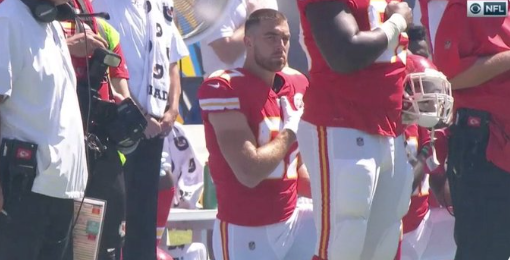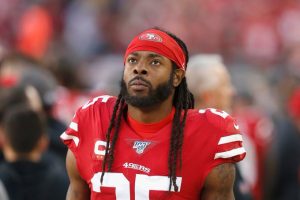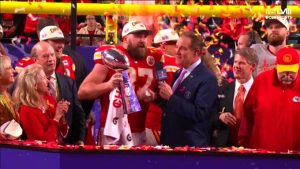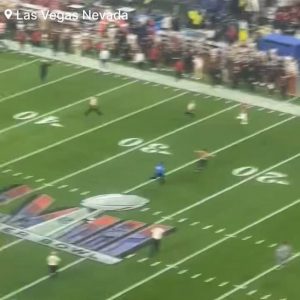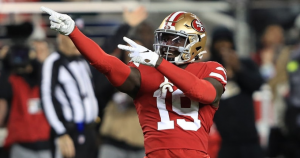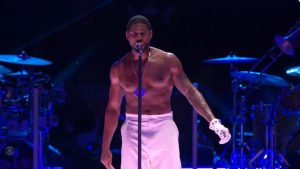Kansas City Chiefs’ tight end Travis Kelce suffered a concerning injury just before halftime during a game in Minnesota. The incident occurred when Kelce caught a pass, attempted to change direction, and then slipped awkwardly, falling to the ground despite no contact from an opponent. Although he managed to get back up on his own, it was evident that he was in discomfort.
Following the fall, Kelce was evaluated on the sideline for a few minutes before limping slowly to the locker room shortly before halftime. The exact nature and severity of his injury were not immediately disclosed, but Kelce’s visible distress indicated that it was a significant concern.
The game was played on a surface featuring slit-film turf, a type of artificial turf that has been criticized by NFL players for its perceived poor quality and potential risks. Kelce, like many other NFL players, has previously voiced his disapproval of turf playing fields, with the majority of players believing that they pose a greater risk of injury compared to natural grass fields.
The incident involving Kelce highlights the ongoing debate within the NFL regarding player safety and the type of playing surface used in stadiums. Injuries on synthetic turf have sparked discussions about the need for consistent field quality standards and player welfare, with many advocating for a shift toward natural grass fields for enhanced safety.
Lloyd Howell, the executive director of the NFL Players Association (NFLPA), has called for all 30 NFL stadiums to transition from turf to natural grass surfaces following the season-ending Achilles tear suffered by New York Jets quarterback Aaron Rodgers at MetLife Stadium. Howell’s statement, posted on X (formerly known as Twitter) by ESPN’s Adam Schefter, emphasized that data suggests playing on grass can reduce the risk of “unnecessary injuries.”
During Monday night’s game, in which the Jets secured an overtime victory against the Buffalo Bills, Rodgers sustained a torn Achilles on the fourth offensive play when he was sacked by Leonard Floyd. This injury ruled him out for the remainder of the game and the entire season.
Players and their representatives have long advocated for natural grass surfaces. NFLPA president JC Tretter previously wrote a letter to the NFL in April, citing data from the 2022 season that indicated a higher occurrence of non-contact lower extremity injuries on turf compared to grass.
Tretter’s efforts led to some NFL stadiums, including MetLife Stadium (home to the Jets and the New York Giants) and Ford Field (home to the Detroit Lions), making changes to their turf surfaces. Despite these changes, Rodgers’ devastating Achilles injury occurred at MetLife Stadium, raising questions about the adequacy of synthetic turf.
Also Read: Travis Kelce’s ex-girlfriends, Maya Benberry, Kayla Nicole react to Taylor Swift romance rumor
Approximately half of the NFL’s 30 stadiums currently feature grass surfaces, indicating that widespread changes would be necessary to fully eliminate turf. While challenges exist in using grass in indoor venues and cold climates, several teams, including dome teams like the Arizona Cardinals and Las Vegas Raiders, as well as cold-weather teams like the Chicago Bears and Pittsburgh Steelers, have successfully maintained natural grass surfaces.
While Rodgers’ injury did involve contact as he was tackled by Leonard Floyd, it’s reasonable to speculate whether natural grass could have provided more cushioning and protection compared to synthetic turf. Howell’s call for a broader transition to natural grass is part of an ongoing conversation within the NFL about player safety and surface types.

